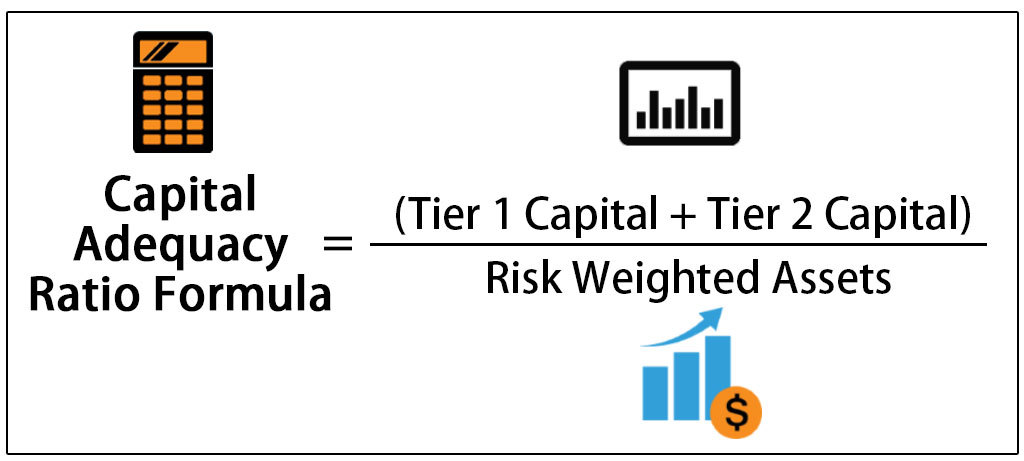Capital Adequacy
Capital Adequacy refers to
the statutory minimum reserve of capital that the bank and financial must have
available. Thus, all the bank and financial institution must maintain the
minimum level of capital as per the NRB directives.
Capital adequacy ratio
refers to the measure of bank capital, which is express in the percentage of the risk-weighted asset. The capital of the bank can be divided into two headings:
Tier I (Core) Capital and Tier II (Supplementary) Capital.
What are Tier I and Tier II capital?
Tier 1 capital is a bank's core capital and includes disclosed reserves—that appears on the bank's financial statements—and equity capital. This money is the funds a bank uses to function on a regular basis and forms the basis of a financial institution's strength. (Investopedia, 2020)
Tier 2 capital is a bank's supplementary capital. Undisclosed reserves, subordinated term debts, hybrid financial products, and other items make up these funds. (Investopedia, 2020)
Capital Adequacy and
Minimum Paid-Up Capital requirements for BFIs:
|
Licensed
Institutions |
Core
Capital (%) |
Total
Capital Fund (%) |
Minimum
Paid Up Capital (Rs.) |
|
Class
‘A’ |
6 |
11 |
8
billion |
|
Class
‘B’ |
6 |
10 |
2.5
billion |
|
Class
‘C’ |
6 |
10 |
1.2
billion |
|
Class
‘D’ |
4 |
8 |
0.8
billion |
Source: Capital Adequacy Framework (2015) & Capital Adequacy Framework (2008)
New capital Adequacy
framework for ‘A’ class Financial Institutions
|
Capital
Adequacy Ratio [X+Y] |
11% |
|
7.25% |
|
A.
Core Capital a.
Equity Capital b.
Retained Earning c.
Share Premium d.
Statuary General Reserve |
4.5% |
a.
Non-cumulative preferred stock b.
Perpetual Debt |
1.5% |
|
1.25%
(can be increased to 2.5%) |
|
2.
Tier 2 Capital (Y) |
3.75% |
|
A.
Undisclosed Reserves B.
Hybrid Instruments C.
Revaluated Reserves D.
Subordinated Debts |
3.75% |
Why is Capital Adequacy Ratio important?
Capital Adequacy Ratio
measures the bank’s ability to absorb the losses and tackle the financial
shocks. Capital Adequacy Ratio determines the capacity of banks to hold the
losses and survive the financial turmoil.
1. Ensuring the solvency of the bank
The capital Adequacy ratio is the measure of a bank’s ability to absorb
the losses that a bank might be exposed to due to risky assets. CAR ensures the
solvency of the bank as high CAR denotes the ability of the bank to absorb high losses
i.e. if tier one capital is high, then the losses incurred of a risky asset can
be absorbed easily.
2.
Restrains the amount of credit creation
CAR according to BASEL III must be maintained 10 percent or more,
that is, every bank must maintain at least a 10 percent Capital Adequacy Ratio.
This implies that the bank should make meticulous care while granting a loan to
the clients as exposure to risky assets decrease the CAR.
3. Credit Exposure
The
capital adequacy ratios are laid based on the credit exposure that a particular
bank has. Credit exposure is different from the amount loaned out. This is
because banks can have credit exposure if they hold derivative products, even
though they have not actually loaned out any money to anybody. Therefore, the
concept of credit exposure and how to measure it in a standardized way across
various banks in different regions of the world is an important issue in formulating
capital adequacy ratios.
4. Multi-Tiered Capital
For the
purpose of calculating the capital adequacy ratio, not all the bank’s capital
is considered to be at an equal footing. The capital is considered to have a
multi-tiered structure. Therefore, some part of the capital is considered to be
more at risk than other parts. These tiers represent the order in which the
banks would write off this capital if the situation to do so arises.
5. Risk Weighting
The capital Adequacy Ratio is calculated as tier one capital plus tier two capital divided by total weighted risk asset. So, the weight of each asset is not equal. The short term borrowings or loan have low risk while long term loans have high risk, therefore, the risk assigned to all the borrowing is not equal.


Thank you very much. You made this concept quite simple.
ردحذفNepali ma padhna paudaina sir?
ردحذفIs it based on NCAF ??
ردحذفإرسال تعليق